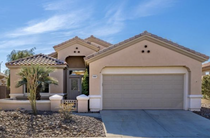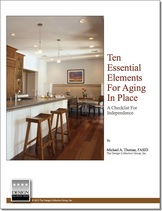Feedback From A Client
|
|
Its nice to get feedback from those we have had the opportunity to serve. This one was simple and straight to the point. Thanks, Barb.....
" As you know from our initial conversation that I wasn't necessarily thinking about what changes I would need should something occur that would make it difficult to remain in this house. But here it is 2024 and I am also trying to be realistic about the challenges to my health since I injured by hip. (This getting old thing is for the birds.) But so glad I had you enlighten me about where I can make updates to my home and how much it would help me ensure my safety and security... but more importantly... my peace of mind. Thanks for doing the assessment and having your vision." -- Barbara B. |

An Older Boomer Gives Advice To Younger Boomers.
We've all read articles about baby boomers living older, longer and enriched lives,... so much so that some reports say they are living lives at least ten years younger... hence... 60 is the new 50 and so forth.
And in an article written by Bart Astor, an expert in life transitions and elder care, he is of the opinion that there are two groups of boomers, an older group born between 1946 and 1954 and a younger born in the second half of the boomer generation years called the Jonesers.
And the older group has a few lessons for the young pups. Check out what they had to say....
------------------------------------------------------------------------------------------------------------------------------------
I’m not too sure what older and younger boomers have in common other than being lumped together by demographers.
By the time the Jones'ers were 18, the war in Vietnam was over and young men didn’t have to worry about being drafted. And the Civil Rights, Free Speech and women’s movements were all at least a decade old. Jonesers were just kids when our heroes were assassinated, both shocking and motivating us.
You Jones'ers joined with us in our battles, certainly, and together we moved some mountains. But as we older boomers have gotten grayer, we have experienced some lessons we can pass on to you, our younger brothers and sisters. The transition from being in your 50s to being in your 60s is about as radical as any I’ve experienced, including when I entered and left my teen years. Chances are, like me, when you get into your 60s, you’ll find yourself facing many issues you feel totally unprepared for.
We saw our parents go through these stages and now we are our parents. For many of us, we are the oldest generation in our families. There’s no one in front of us as we go up the escalator. That’s scary.
An Older Boomer's 8 Tips for Younger Boomers
But I have good news for younger boomers, starting with the hackneyed cliché: It keeps getting better. With that in mind, here are eight of my best pieces of advice for you:
1. Don’t try to hold on to your youth. Embrace your age. Teach your kids and the rest of the world to value age. And look forward to getting older (forget about the joke that it beats the alternative). Only when you’re proud of being older will others realize that experience is valuable. Age really does bring wisdom.
2. Give back. You can use the wisdom you’ve gained through experience to great benefit. With more free or discretionary time, we early boomers rediscovered our idealism. For a time, we were like you are now — too busy raising families and working to become involved in issues that concerned us. Now we can. You were always more cynical, but I encourage you to embrace activism. You’ll be able to take a leadership position in an area that affects the quality of your life and can actually affect change.
3. Accept help graciously. When you go over to your parents' house, you probably help them with some chores they struggle with: changing a light bulb that’s out of reach, carrying or moving something heavy or fixing something broken. Your parents needed to learn to accept your help. Soon, you’ll have the pleasure of doing the same with your kids. You loved giving to your parents; some time in the not too distant future, let your adult children have the same joy of helping you.
4. Keep fit. There’s no denying that physical changes happen as we advance a decade. You'll switch from an attitude of “no pain, no gain” to “don’t overdo it.” Accept some of this — but not all of it. Don’t stop exercising. Do accept that your body is just that little bit more fragile and your healing powers slightly diminished. Be more careful about what you do.
5. Find some new goals. In our 50s, we accomplished many of our goals or gave up on those that were out of reach. We had families and got to the top of our career paths. Then we realized we didn’t have any more goals. That left us rudderless. By starting now to think about life after work, you will be in a much better position to find those new and realistic goals for your later years.
6. Pay attention. Most of what happens to us is not a surprise. Sure, sometimes life brings the unexpected — an injury or, much better, lottery winnings. But more often than not, we see the ball coming at us. By anticipating, planning, budgeting,and paying attention, you won’t have to rely on luck to reach your goals or enjoy life. That includes all the financial, legal, health and work choices you make.
7. Choose your lifestyle. Budgeting is not a diet to get you to live within your means. It's not even about making your money last. It’s about figuring out how you can maintain the lifestyle you want for the rest of your life. The quality of your life is about choosing the most appropriate lifestyle for you.
8. Don’t judge yourself. You’ve already made lifestyle decisions, including your goals and interests. What you do now in your free time is what you want to do. Don’t judge whether it’s good or bad. It’s a choice you made. But also keep in mind that you’re not stuck with it forever — it can and will likely change.
-------------------------------------------------------
Article Published by: Nextave.org
We've all read articles about baby boomers living older, longer and enriched lives,... so much so that some reports say they are living lives at least ten years younger... hence... 60 is the new 50 and so forth.
And in an article written by Bart Astor, an expert in life transitions and elder care, he is of the opinion that there are two groups of boomers, an older group born between 1946 and 1954 and a younger born in the second half of the boomer generation years called the Jonesers.
And the older group has a few lessons for the young pups. Check out what they had to say....
------------------------------------------------------------------------------------------------------------------------------------
I’m not too sure what older and younger boomers have in common other than being lumped together by demographers.
By the time the Jones'ers were 18, the war in Vietnam was over and young men didn’t have to worry about being drafted. And the Civil Rights, Free Speech and women’s movements were all at least a decade old. Jonesers were just kids when our heroes were assassinated, both shocking and motivating us.
You Jones'ers joined with us in our battles, certainly, and together we moved some mountains. But as we older boomers have gotten grayer, we have experienced some lessons we can pass on to you, our younger brothers and sisters. The transition from being in your 50s to being in your 60s is about as radical as any I’ve experienced, including when I entered and left my teen years. Chances are, like me, when you get into your 60s, you’ll find yourself facing many issues you feel totally unprepared for.
We saw our parents go through these stages and now we are our parents. For many of us, we are the oldest generation in our families. There’s no one in front of us as we go up the escalator. That’s scary.
An Older Boomer's 8 Tips for Younger Boomers
But I have good news for younger boomers, starting with the hackneyed cliché: It keeps getting better. With that in mind, here are eight of my best pieces of advice for you:
1. Don’t try to hold on to your youth. Embrace your age. Teach your kids and the rest of the world to value age. And look forward to getting older (forget about the joke that it beats the alternative). Only when you’re proud of being older will others realize that experience is valuable. Age really does bring wisdom.
2. Give back. You can use the wisdom you’ve gained through experience to great benefit. With more free or discretionary time, we early boomers rediscovered our idealism. For a time, we were like you are now — too busy raising families and working to become involved in issues that concerned us. Now we can. You were always more cynical, but I encourage you to embrace activism. You’ll be able to take a leadership position in an area that affects the quality of your life and can actually affect change.
3. Accept help graciously. When you go over to your parents' house, you probably help them with some chores they struggle with: changing a light bulb that’s out of reach, carrying or moving something heavy or fixing something broken. Your parents needed to learn to accept your help. Soon, you’ll have the pleasure of doing the same with your kids. You loved giving to your parents; some time in the not too distant future, let your adult children have the same joy of helping you.
4. Keep fit. There’s no denying that physical changes happen as we advance a decade. You'll switch from an attitude of “no pain, no gain” to “don’t overdo it.” Accept some of this — but not all of it. Don’t stop exercising. Do accept that your body is just that little bit more fragile and your healing powers slightly diminished. Be more careful about what you do.
5. Find some new goals. In our 50s, we accomplished many of our goals or gave up on those that were out of reach. We had families and got to the top of our career paths. Then we realized we didn’t have any more goals. That left us rudderless. By starting now to think about life after work, you will be in a much better position to find those new and realistic goals for your later years.
6. Pay attention. Most of what happens to us is not a surprise. Sure, sometimes life brings the unexpected — an injury or, much better, lottery winnings. But more often than not, we see the ball coming at us. By anticipating, planning, budgeting,and paying attention, you won’t have to rely on luck to reach your goals or enjoy life. That includes all the financial, legal, health and work choices you make.
7. Choose your lifestyle. Budgeting is not a diet to get you to live within your means. It's not even about making your money last. It’s about figuring out how you can maintain the lifestyle you want for the rest of your life. The quality of your life is about choosing the most appropriate lifestyle for you.
8. Don’t judge yourself. You’ve already made lifestyle decisions, including your goals and interests. What you do now in your free time is what you want to do. Don’t judge whether it’s good or bad. It’s a choice you made. But also keep in mind that you’re not stuck with it forever — it can and will likely change.
-------------------------------------------------------
Article Published by: Nextave.org
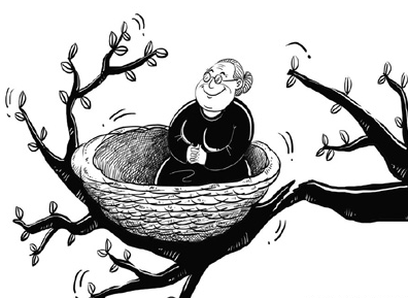
Here is a great article written by Henry Cisneros, former secretary of the U.S. Department of Housing and Urban Development, is co-chairman of the Bipartisan Policy Center Housing Commission. His passion for keeping people in their homes is based on his own family experiences. Read what he has to say abut the changing nature of the population and what they will need to successfully maintain their independence.
As baby boomers, some 78 million strong and our nation’s largest demographic group, head into their retirement years, they will present enormous challenges for housing providers and policy makers.
The overwhelming majority will seek to “age in place” in their own homes and communities, foregoing long-term institutional care. The potential savings to our health care system are great.
Most baby boomers want to avoid institutions, but millions will have a hard time affording the changes needed to make their homes accessible.
But many homes and communities lack the structures and services that make aging in place safe and affordable. For millions of older Americans who spend more than half their income just to cover housing costs, financing options will be more limited.
Nonprofit organizations like Stewards of Affordable Housing for the Future and LeadingAge have done pioneering work to develop strategies that link low-income senior housing with health care and supportive services. The federal government should help by encouraging housing and health care providers to more fully integrate their services.
Today, the federal government provides vital support for more than 1.5 million elderly households through its rental-housing programs. These programs, however, meet only a fraction of the need. In addition, many of the rental properties that receive federal subsidies and serve the low-income senior population desperately require modernization. Those properties often lack essential features like hand rails, barrier-free entrances, and roll-in showers.
Efforts to address the capital backlog and ongoing accrual needs of the existing public housing stock, as well as to preserve the Low Income Housing Tax Credit program would go a long way toward improving housing quality for senior residents. These improvements will require a sustained commitment of additional funds, but will yield substantial savings to the health care system over time as more seniors are able to age in place.
While some states and localities are beginning to measure these cross-sector savings, the Office of Management and Budget, in evaluating the costs of housing programs, should account for any savings to the health care system made possible by safer, more accessible housing linked to essential supportive services.
In a report in February, the Bipartisan Policy Center Housing Commission proposed how federal agencies could work together to meet the housing needs of our nation’s burgeoning senior population. That's crucial as the nation's seniors grow.
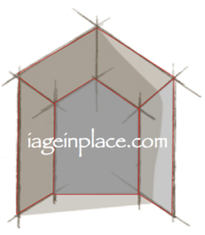
Is It Cheaper If You Can Stay At Home? You Bet It Is.
It is doubtful that many people like the idea that one day they may have to be in some type of extended care facility, a nursing home or other institutional setting. Circumstances however do occur, whether on a temporary or permanent basis, that force some to give up their own home and move into a place that will provide some measure of specialized care. And it is not cheap to do that.
Recent studies show that "quality care" facilities can cost anywhere between $5,000 and 7,000 a month, a bit less if one selects a group home environment. But it can a whole lot more if the choice is to live in an independent living center with lots of amenities. Much depends of course on the type of care one needs and how much one can afford. But consider this,... spending $60K to 84K or more a year for five or ten years and we're talking significant dollars and cents.... upwards of a half a million dollars if you do the math.
Now consider these steps to make your home the home of a lifetime:
• Be thoughtful. What will you need to do to your current home to stay in place?
• Plan for your future. Think short term and long term as you plan your dream.
• And work the plan. Decide to make changes to your home - now - decisions that could allow you the option to "stay in place" before an unexpected, critical decision needs to be made by you for yourself, or by a family member or friend.
• And finally set a budget for this year to make even the most basic of changes,... then start working the plan.
It is doubtful that many people like the idea that one day they may have to be in some type of extended care facility, a nursing home or other institutional setting. Circumstances however do occur, whether on a temporary or permanent basis, that force some to give up their own home and move into a place that will provide some measure of specialized care. And it is not cheap to do that.
Recent studies show that "quality care" facilities can cost anywhere between $5,000 and 7,000 a month, a bit less if one selects a group home environment. But it can a whole lot more if the choice is to live in an independent living center with lots of amenities. Much depends of course on the type of care one needs and how much one can afford. But consider this,... spending $60K to 84K or more a year for five or ten years and we're talking significant dollars and cents.... upwards of a half a million dollars if you do the math.
Now consider these steps to make your home the home of a lifetime:
• Be thoughtful. What will you need to do to your current home to stay in place?
• Plan for your future. Think short term and long term as you plan your dream.
• And work the plan. Decide to make changes to your home - now - decisions that could allow you the option to "stay in place" before an unexpected, critical decision needs to be made by you for yourself, or by a family member or friend.
• And finally set a budget for this year to make even the most basic of changes,... then start working the plan.

Here are ten cost effective things to do to age in place:
(1) Change all the knobs on your doors to handles. It just makes sense for so many reasons.
And in some cities, like Vancouver Canada, it is required by their building codes.
(2) Choose finishes, paints, lighting, building materials and flooring that reduce maintenance.
You don't want to be up on a tall ladder (or down on the floor) unless you can't help it.
(3) Plan to use balance bars not only in the shower but all thru the house.
They can add safety and security and if you choose those that are stylish, you'll add beauty.
(4) Weather strip and insulate doors and windows to save on energy costs.
This is a no brainier for any one at any age but especially for those with declining incomes.
(5) Consider sharing your home with someone else to save money and have companionship.
Multi-generational homes lower living expenses and can keep families together.
(6) Swap out toilets for dual-flush to reduce water usage & choose a seat height that is appropriate.
It is easier on the knees,...plus people are different sizes so pick a "chair height" toilet that 'fits best."
(7) Steps and stairs are challenging so now is the time to plan for at least one no-step entry.
Eliminate thresholds at the doorways. And gardens & berms can integrate ramps into the yard.
(8) Make sure the residence has a house number that can be easily seen from the street.
And light it up. Imagine what emergency people go thru to find a house at night.
(9) Getting doorways to be wider can be costly so as a first step, use off-set hinges.
They increase the jamb-to-jamb dimension by nearly 2" and just enough to make it easy to pass.
(10) Plan for a first floor accessible bathroom if its practical to do.... or update a space on the first floor of the home.
Who knows, ... you and your guests might need to use it some day as well.
So there you go. Ten simple ideas for making a home a place for a lifetime.
(1) Change all the knobs on your doors to handles. It just makes sense for so many reasons.
And in some cities, like Vancouver Canada, it is required by their building codes.
(2) Choose finishes, paints, lighting, building materials and flooring that reduce maintenance.
You don't want to be up on a tall ladder (or down on the floor) unless you can't help it.
(3) Plan to use balance bars not only in the shower but all thru the house.
They can add safety and security and if you choose those that are stylish, you'll add beauty.
(4) Weather strip and insulate doors and windows to save on energy costs.
This is a no brainier for any one at any age but especially for those with declining incomes.
(5) Consider sharing your home with someone else to save money and have companionship.
Multi-generational homes lower living expenses and can keep families together.
(6) Swap out toilets for dual-flush to reduce water usage & choose a seat height that is appropriate.
It is easier on the knees,...plus people are different sizes so pick a "chair height" toilet that 'fits best."
(7) Steps and stairs are challenging so now is the time to plan for at least one no-step entry.
Eliminate thresholds at the doorways. And gardens & berms can integrate ramps into the yard.
(8) Make sure the residence has a house number that can be easily seen from the street.
And light it up. Imagine what emergency people go thru to find a house at night.
(9) Getting doorways to be wider can be costly so as a first step, use off-set hinges.
They increase the jamb-to-jamb dimension by nearly 2" and just enough to make it easy to pass.
(10) Plan for a first floor accessible bathroom if its practical to do.... or update a space on the first floor of the home.
Who knows, ... you and your guests might need to use it some day as well.
So there you go. Ten simple ideas for making a home a place for a lifetime.
|
|

Aging in place and universal design is about building or modifying places and spaces—both public and private—to accommodate people of all ages and abilities.
It means providing people of all ages and all abilities with more options. More than just the next big, the ideas and concepts behind the design is a win-win for sandwich generation boomers caring for aging parents and their children at home, for grandparents raising grandchildren and great-grandchildren, and for all who are facing the challenges of caring for a loved one with Alzheimer’s or other chronic diseases.
In a recent edition of Reader's Digest, an article offered ideas how to keep the options open and everyone safe and secure.
"Whether your family needs the support now or down the road, universal design features are a good long-term investment for the home itself. So what does an age-friendly home look like? AARP.org outlines the most important elements of universal design:
• No-step entry: You should have at least one step-free entrance (either at the front, back, or side of the house) so everyone, including wheelchair users, can enter the home easily and safely.
• Wide doorways and hallways: A doorway that is at least 36 inches wide is great when you’re bringing home a new mattress or couch, but it’s even better when someone you care for, or a regularly visiting friend or family member, is in a wheelchair. Also, hallways that are 42 inches wide are good for multigenerational family members with varying “mobilities.”
• One-floor living: Access to essential rooms without the use of stairs makes life more convenient and safe for residents ages 0 to 100.
• Easily accessible controls and switches: A person in a wheelchair can reach light switches that are 42-48 inches above the floor. Thermostats should be placed no higher than 48 inches off the floor, and electrical outlets 18-24 inches off the floor. Keep these measurements in mind when modifying your home.
• Easy-to-use handles: Consider replacing twist/turn doorknobs and faucets with lever-style handles for (painless) ease of use."
It means providing people of all ages and all abilities with more options. More than just the next big, the ideas and concepts behind the design is a win-win for sandwich generation boomers caring for aging parents and their children at home, for grandparents raising grandchildren and great-grandchildren, and for all who are facing the challenges of caring for a loved one with Alzheimer’s or other chronic diseases.
In a recent edition of Reader's Digest, an article offered ideas how to keep the options open and everyone safe and secure.
"Whether your family needs the support now or down the road, universal design features are a good long-term investment for the home itself. So what does an age-friendly home look like? AARP.org outlines the most important elements of universal design:
• No-step entry: You should have at least one step-free entrance (either at the front, back, or side of the house) so everyone, including wheelchair users, can enter the home easily and safely.
• Wide doorways and hallways: A doorway that is at least 36 inches wide is great when you’re bringing home a new mattress or couch, but it’s even better when someone you care for, or a regularly visiting friend or family member, is in a wheelchair. Also, hallways that are 42 inches wide are good for multigenerational family members with varying “mobilities.”
• One-floor living: Access to essential rooms without the use of stairs makes life more convenient and safe for residents ages 0 to 100.
• Easily accessible controls and switches: A person in a wheelchair can reach light switches that are 42-48 inches above the floor. Thermostats should be placed no higher than 48 inches off the floor, and electrical outlets 18-24 inches off the floor. Keep these measurements in mind when modifying your home.
• Easy-to-use handles: Consider replacing twist/turn doorknobs and faucets with lever-style handles for (painless) ease of use."
Visitability ~ An Evolving Trend For Aging In Place
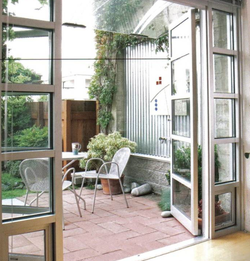
Another key issue facing aging baby boomers is ensuring their homes can pass the “visitability” test — that is whether they are easy to visit for friends or relatives in wheelchairs or with other mobility problems, said Michael A. Thomas, a specialist in aging-in-place design.
Some cities, such as Tucson, have passed visitability ordinances, requiring new homes to incorporate several features, such as entrances with no steps, wide doorways and light switches no higher than 48 inches from the floor.
Thomas would like to see similar laws in all cities, with at least three key provisions.
■ One entrance with no steps and a clear route from the sidewalk or driveway.
■ Doorways at least 32 inches wide.
■ A half-bathroom on the ground floor that is wheelchair accessible.
It makes so much sense to incorporate such features and it adds to the property values as well.
Some cities, such as Tucson, have passed visitability ordinances, requiring new homes to incorporate several features, such as entrances with no steps, wide doorways and light switches no higher than 48 inches from the floor.
Thomas would like to see similar laws in all cities, with at least three key provisions.
■ One entrance with no steps and a clear route from the sidewalk or driveway.
■ Doorways at least 32 inches wide.
■ A half-bathroom on the ground floor that is wheelchair accessible.
It makes so much sense to incorporate such features and it adds to the property values as well.
A Great Article About Michael Thomas and His Passion Of Aging In Place.
Palm Springs Life magazine interviewed Michael about his work with clients and to help them understand that making a few changes in their homes and houses would open up opportunities to remain independent and to age in place. The article is available on their website and includes several pictures of projects that showcase just how great looking these interiors can be.
If you would like to read the article, just CLICK HERE !
If you would like to read the article, just CLICK HERE !
It Is About Time That Changes Are Made To Your Home Environment
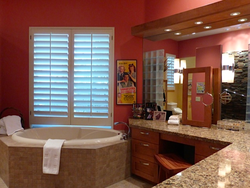
As Boomers continue to look toward their retirement years, many are considering what their options might be,... including where and how they will live in homes of their own. In this article in the Desert Sun, learn how our designer Michael A. Thomas, FASID, CAPS, remodeled a small bathroom in Palm Desert, CA for a client. It shows that universal design and aging in place are being accepted on many levels and for many good reasons. It creates independency.
To read the article... CLICK HERE !
To read the article... CLICK HERE !
Sustainable Homes Will Need To Feature Aging In Place Concepts
When we hear the words “sustainable design,” it refers to buildings that are designed to reduce their carbon footprint. But with the growing population of 76 million baby boomers, creating a “sustainable life” at home will the next big wave in design according to Michael A. Thomas, a Palm Springs, CA. interior designer with a special interest in creating live and work environments to sustain the quality of life.
• Click Here For More.
• Click Here For More.
Updated Guide For Aging In Place Now AvailableJust updated and freshly published is a guide to the ten essentials for creating homes that are safe, secure and last a lifetime. Written by Michael A. Thomas, FASID, an interior designer with a passion for creating homes that are accessible and adaptable over time, this guide provides the ten basic elements that Thomas suggests should be a part of any living environment.
• To View The Guide Online, CLICK HERE |
Will You Be Living Longer? Looks Like You Will.
According to new research, primitive hunter gatherers in their 30s faced the same odds of dying as a modern 72-year-old man. Scientists looked at modern Swedish and Japanese men, the two countries with the longest life expectancy, and compared them to their counterparts in 1800; the latter had the same life spans as primitive humans. The researchers say odds of death at all ages has fallen so drastically since 1900 that life expectancy has risen faster than it has in the previous 200 millenia!
A New Concept In Aging Place Community in Oklahoma
Thinking out side the box is what two individuals in Stillwater, Oklahoma have been doing since imaging what it would be like to live in a "co-op" of sorts with people of a similar age and background. Initially created as an idea by two friends, Pat Darlington and Kay Stewart, the co-housing community is now a reality, located just north of the campus of Oklahoma State University and a community of people building relationships and caring for each other.
Is this the new wave of senior housing?
Sure seems like a great concept.
That 2009 idea turned Pat and Kay with no real estate experience into business partners who now have Oklahoma’s first cohousing community nearly built and a substantial chunk of their bank accounts at risk.
“Pat was so curious about it and took off for that workshop in Colorado,” said Stewart. “I was on a trip to Greece and she kept emailing me: ‘You outta be here!’”
That workshop, led by cohousing guru Charles Durrett, convinced Darlington that she and Stewart could create a community where seniors would be interdependent, sharing skills and helping one another live full lives. Darlington expresses disdain for the assisted-care residences developed 30 years ago, which she says were built to keep aging people entertained until they died.
“I don’t want to be entertained,” Darlington said. “I want to make a difference in the world, and I don’t want to retire from that.”
For More Information, CLICK HERE
Is this the new wave of senior housing?
Sure seems like a great concept.
That 2009 idea turned Pat and Kay with no real estate experience into business partners who now have Oklahoma’s first cohousing community nearly built and a substantial chunk of their bank accounts at risk.
“Pat was so curious about it and took off for that workshop in Colorado,” said Stewart. “I was on a trip to Greece and she kept emailing me: ‘You outta be here!’”
That workshop, led by cohousing guru Charles Durrett, convinced Darlington that she and Stewart could create a community where seniors would be interdependent, sharing skills and helping one another live full lives. Darlington expresses disdain for the assisted-care residences developed 30 years ago, which she says were built to keep aging people entertained until they died.
“I don’t want to be entertained,” Darlington said. “I want to make a difference in the world, and I don’t want to retire from that.”
For More Information, CLICK HERE
Great Idea: Creating A Network Makes Life Easier To Age In Place
Single and retired, with no family nearby, 64-year-old Lorna Grenadier knows she'll need a better support system if she wants to grow old in her apartment in the Foggy Bottom neighborhood of Washington, D.C., where she has lived for 40 years. So she's added community organizing to her list of interests and is helping create a service network she hopes will enable her and others like her to remain in their own homes as they age.
For the past 18 months, Grenadier has been working with other volunteers to research and launch the Foggy Bottom West End Village network. The group aims to provide paying members ($600 a year for singles; $900 for households) a range of services, including transportation and connections to vetted local businesses, as well as serve as a contact point for emergencies. Some of the annual fee will also cover social activities for members.
"It’s also about providing peace of mind," says Grenadier -- a sort of insurance policy should someone need help. In a survey of potential members in the her area, 75 percent said they were interested in the concept, though just 50 percent said they would need the services today.
For the past 18 months, Grenadier has been working with other volunteers to research and launch the Foggy Bottom West End Village network. The group aims to provide paying members ($600 a year for singles; $900 for households) a range of services, including transportation and connections to vetted local businesses, as well as serve as a contact point for emergencies. Some of the annual fee will also cover social activities for members.
"It’s also about providing peace of mind," says Grenadier -- a sort of insurance policy should someone need help. In a survey of potential members in the her area, 75 percent said they were interested in the concept, though just 50 percent said they would need the services today.
Are You And Your Home Ready For Universal Design?
Check out what Readers Digest has to say on the topic.
CLICK HERE.
Internet Connection Keeps Seniors Connected To The World.

From Senior Housing News:
Seniors need to have better access to high-speed Internet in order to benefit from Web-based technologies that support aging in place such as telehealth and “smart home” systems, says AARP in a Public Policy Institute report.
Many older adults still do not have affordable, high-speed connectivity at home, and a review of 2010′s National Broadband Plan suggests a “slow and uncertain progress” to address barriers to older adults’ adoption and use of broadband, according to the report.
Just under four in ten people aged 65 and older had high-speed Internet access in their homes as of 2012, compared to 77% of the 30-49 age demographic.
Among minorities, access dips much lower, to 18% of African-Americans aged 60 and older, and 20% of Hispanics in the same age cohort.
Lacking access to broadband access is a problem, according to an FCC chairman who said that “broadband has gone from being a luxury to being a necessity for full participation in our economy and society.”
While the Internet was once predominantly used by consumers for email and reading Web pages, says AARP, it has become a more powerful and common platform with many more capacities.
Internet-based technologies can help support the needs and ambitions of older adults in five interrelated areas, the report says: personal fulfillment, health preservation, social connectedness, functional capability and activity, and caregiver support.
The ability to work from home thanks to higher-speed Internet service, for example, could be “particularly valuable” to older adults facing “growing demands to manage complex health, retirement, and care arrangements.”
Other uses include self-management of chronic diseases that can help prevent or postpone functional decline, such as home-based “smart medical services.” Game systems like Nintendo Wii or Sony PlayStation can help seniors stay physically active and encourage seniors to exercise, while video conferencing and telepresence technology can connect patients living at home with health professionals and services.
Seniors need to have better access to high-speed Internet in order to benefit from Web-based technologies that support aging in place such as telehealth and “smart home” systems, says AARP in a Public Policy Institute report.
Many older adults still do not have affordable, high-speed connectivity at home, and a review of 2010′s National Broadband Plan suggests a “slow and uncertain progress” to address barriers to older adults’ adoption and use of broadband, according to the report.
Just under four in ten people aged 65 and older had high-speed Internet access in their homes as of 2012, compared to 77% of the 30-49 age demographic.
Among minorities, access dips much lower, to 18% of African-Americans aged 60 and older, and 20% of Hispanics in the same age cohort.
Lacking access to broadband access is a problem, according to an FCC chairman who said that “broadband has gone from being a luxury to being a necessity for full participation in our economy and society.”
While the Internet was once predominantly used by consumers for email and reading Web pages, says AARP, it has become a more powerful and common platform with many more capacities.
Internet-based technologies can help support the needs and ambitions of older adults in five interrelated areas, the report says: personal fulfillment, health preservation, social connectedness, functional capability and activity, and caregiver support.
The ability to work from home thanks to higher-speed Internet service, for example, could be “particularly valuable” to older adults facing “growing demands to manage complex health, retirement, and care arrangements.”
Other uses include self-management of chronic diseases that can help prevent or postpone functional decline, such as home-based “smart medical services.” Game systems like Nintendo Wii or Sony PlayStation can help seniors stay physically active and encourage seniors to exercise, while video conferencing and telepresence technology can connect patients living at home with health professionals and services.

